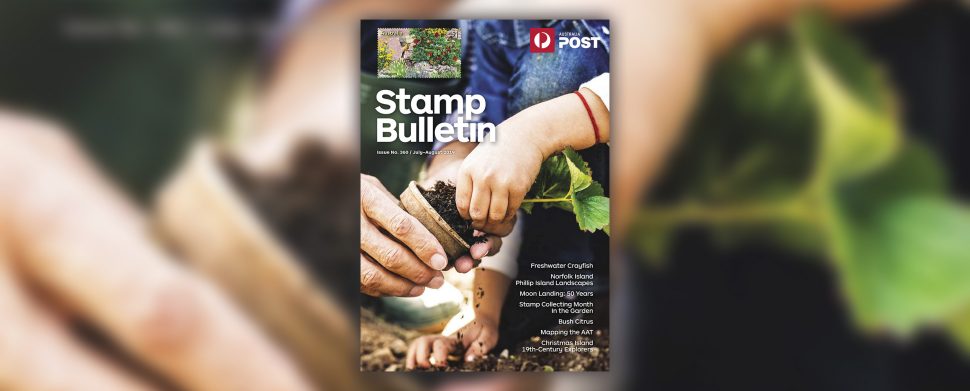Dear collectors,
Welcome to a new edition of the Stamp Bulletin. I’m pleased to introduce the stamp issues and collectables that will be released over coming weeks, including Stamp Collecting Month and an issue commemorating a globally significant event.
Early in July, we issue three stamps featuring freshwater crayfish, one of which is the world’s largest. Although opportunistic omnivores, these crustaceans are principally vegetarian and they spend the night foraging on the floors of dams, rivers or streams for water weeds and decaying roots or leaves.
Also in July, we celebrate the anniversary I allude to above. On 21 July 1969 (AEST), American astronauts Neil Armstrong and Buzz Aldrin became the first humans to walk on the Moon’s surface, arguably the 20th century’s most significant event. While this was an American endeavour, Australia played a role in communicating pictures and footage between the Moon and Earth, so that the historic event could be seen as it happened.
Sustainability is a crucial concept these days, and Stamp Collecting Month invites us into a wonderful sustainable garden. Designed to minimise environmental impact, encourage biodiversity and promote sustainable living, the garden, with its many interdependent layers, is presented through an illustration by Andrew Hopgood. I especially like the pond, which provides bathing and drinking water for wildlife such as birds and frogs, and in doing so supports the natural control of garden pests.
Bush Citrus, to be released in August, is a flora-related stamp issue. The stamps present three of Australia’s native edible flora species from the citrus family (Rutaceae), including two from the genus Citrus. With high-profile chefs’ increasingly using bush foods in their dishes, restaurant diners are experiencing some new and unique flavours.
The final stamp issue we present in this edition focuses on two 19th-century voyages to Christmas Island. Both Captain John Fiot Lee Pearse Maclear and Captain Pelham Aldrich visited the island in 1887 and made valuable discoveries. The now-extinct species Christmas Island Rat was named Rattus macleari after Maclear.
This content was produced at the time of the Stamp Bulletin publication date and will not be updated.

